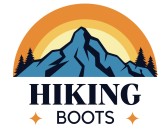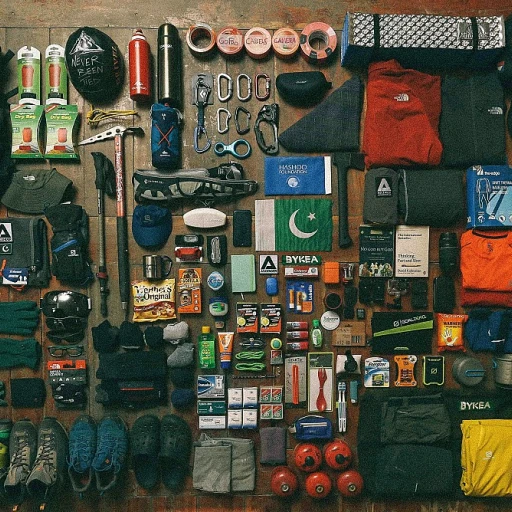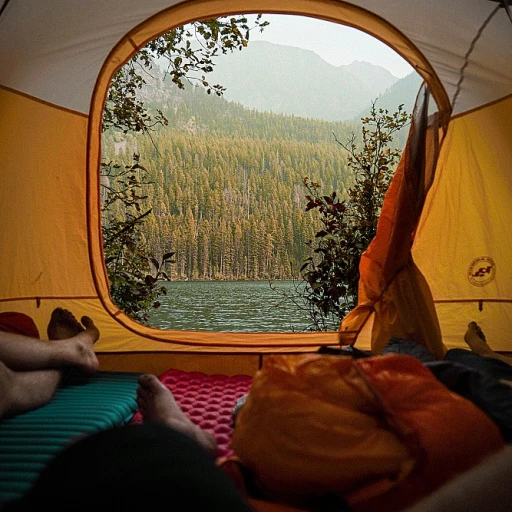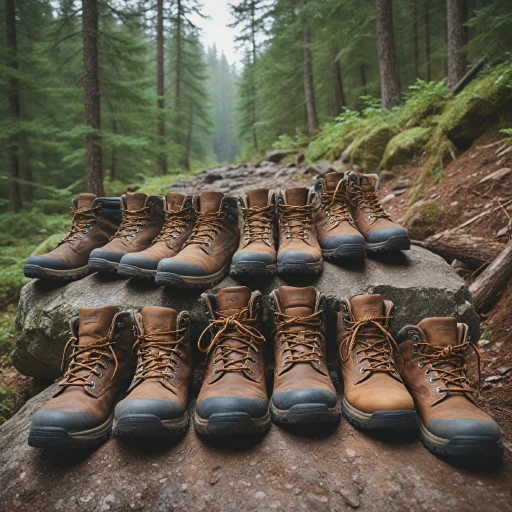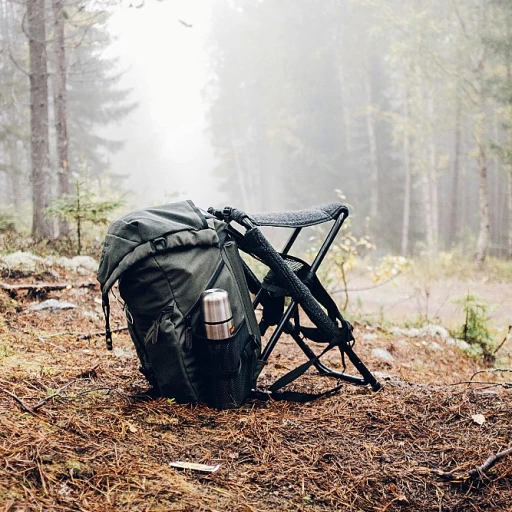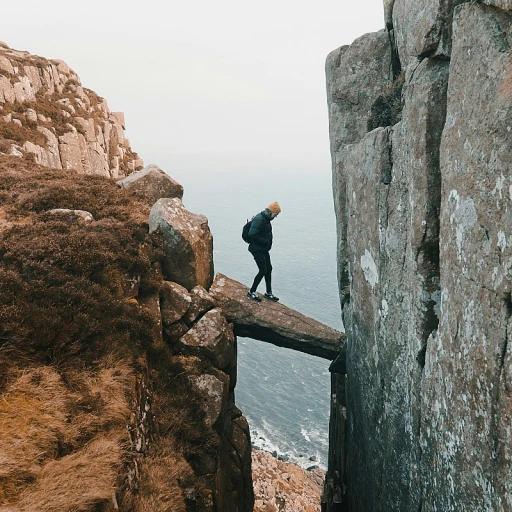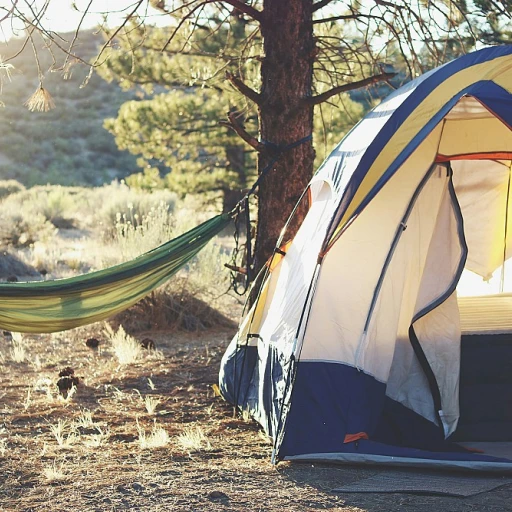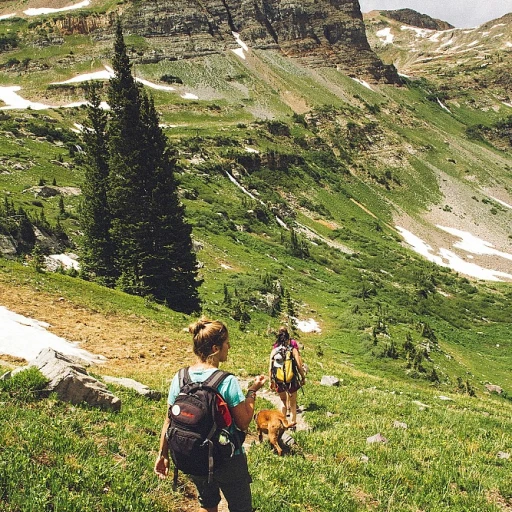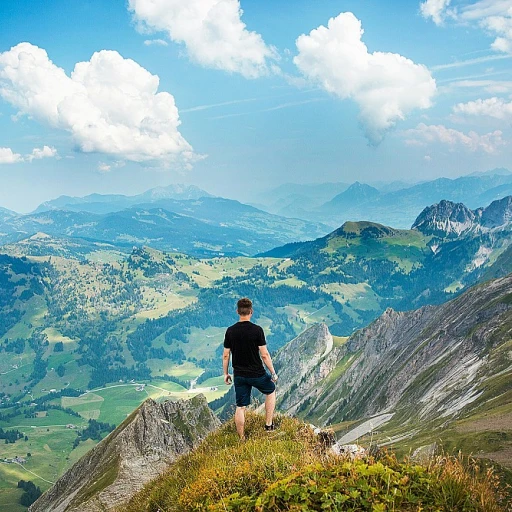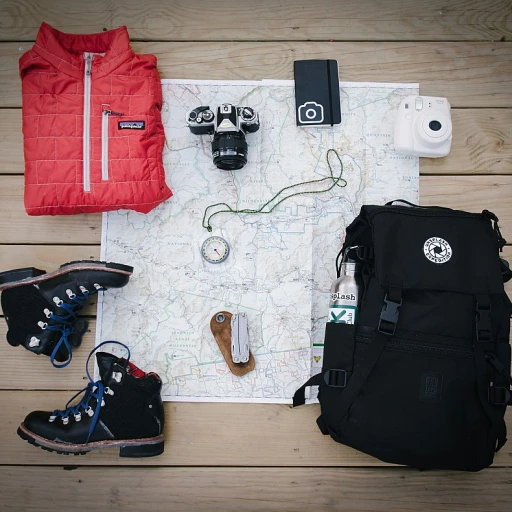
Understanding Different Types of Hiking Boots
Exploring the Categories of Hiking Footwear
Choosing the right pair of hiking boots is crucial for any outdoor enthusiast. The diverse types of hiking footwear available today cater to various terrains and hiking styles. It’s important to understand the fundamental differences to make an informed decision.- Hiking Shoes: Ideal for well-maintained trails, hiking shoes offer flexibility and lightweight comfort. While they don’t provide the ankle support of full hiking boots, their nimbleness makes them perfect for trail runners and speed hikers.
- Mid-Cut Hiking Boots: These are a compromise between hiking shoes and high-cut boots, providing moderate ankle support. They are suitable for day hikes and weekends on less rigorous terrain. The Merrell Moab Mid GTX series is a popular choice among enthusiasts.
- Backpacking Boots: Built for long treks and heavy loads, backpacking boots offer superior support and durability. With reinforced toe boxes and robust lacing systems, models like the Salomon Quest Gore-Tex ensure stability over challenging landscapes.
- Trail Running Shoes: For those who favor speed, trail runners like the Altra Lone Peak series offer an agile hiking experience. While they lack the support of traditional boots, their lightweight design is favored by many for ultra challenges.
Key Features to Consider in Hiking Boots
Essential Features to Prioritize
One of the most crucial aspects of selecting the ideal hiking boots is understanding the key features that truly matter. After all, a well-chosen boot means the difference between a memorable adventure and a miserable terrain-trekking experience. Here are some of the top features to look out for:- Lacing System: A reliable lacing system ensures a secure fit, providing stability whether you're using trail runners or moab mid boots. Check for adjustable eyelets that hold tension well, allowing precise adjustments.
- Waterproof Capabilities: Whether tackling muddy trails or crossing streams, waterproof hiking boots are a must. Look for GTX technology in boots like the mid gtx or merrell moab versions to keep feet dry without sacrificing breathability.
- Protection and Support: A reinforced toe box offers protection against obstacles like rocks and roots. Consider models with a high-cut design, such as the salomon quest, to provide ankle support on challenging trails.
- Durability: Opt for quality materials that withstand rugged use, such as leather or durable synthetics. Evaluating price against long-term performance can guide your investment decisions, with brands like merrell and keen offering reliable options.
- Gender-Specific Fit: Recognize that gender differences matter in the fit of a hiking shoe. Brands often design specific versions, like the gender women’s or men’s models, to optimize comfort and structural alignment.
- Grip and Sole Traction: A well-crafted outsole provides crucial grip on various surfaces. Sole traction is key, especially in shoes for wet conditions or steep terrains.
- Weight Considerations: Lighter boots like the altra lone peak or hiking shoes like moab speed can reduce fatigue on longer hikes. Aim for a balance between necessary weight and essential protection.
The Importance of Proper Fit and Sizing
The Essentials of a Perfect Fit in Hiking Footwear
When it comes to choosing the right hiking boots, ensuring a perfect fit is paramount for both comfort and safety on the trail. Ill-fitting footwear can lead to discomfort, blisters, and even injuries during a long hike. Understanding how to properly fit your hiking shoe or boot is as important as selecting the key features that suit your hiking needs.
Consider these tips for achieving the best fit:
- Determine Your Size: Start by getting professionally sized. Feet can vary in size between brands and models. Nunca, ignore the importance; even brands like Merrell and Salomon, known for models such as the Merrell Moab or Salomon Quest, will have slight size variances.
- Look at the Toe Box: Ensure there is enough room in the toe box to wiggle your toes, which avoids cramping. If squeezing into a pair of Salomon ski boots was never ideal, the same goes for hiking boots.
- Consider Gender-Specific Models: Gender-specific models are designed considering anatomical foot differences. For instance, the Merrell Moab models for women have different lasts compared to those for men.
- Test with Proper Socks: Always try on hiking boots with the socks you plan to wear on your adventure. The right sock can enhance comfort and fit.
- Evaluate the Lacing System: Properly using the lacing system can make all the difference. Brands like Keen and Altra Lone offer versatile systems. This not only secures the foot but helps adjust pressure points, ensuring comfort across varied terrain.
- Walk and Evaluate: Simulate hiking conditions by walking on an incline or descending to test the grip, stability, and comfort under various scenarios, including water-resistance if you're selecting waterproof hiking models.
In conclusion, a properly fitting hiking boot is critical in preventing pain and maximizing performance. Whether you're considering a pair of lightweight trail runners like the Lone Peak or more robust options like the Mid GTX variants, make fit your top priority. By understanding these elements, your hiking adventures will not only be safe but also enjoyable.
Materials and Durability
Materials That Make or Break Your Hike
When it comes to the durability of hiking boots, the material is one of the most critical factors to consider. High-quality materials ensure not only longevity but also comfort, performance, and protection against the elements. Here are the typical materials found in the best hiking boots:
- Leather: Full-grain leather is known for its durability and excellent water resistance. It's often seen in traditional hiking and backpacking boots, offering solid protection in rough terrains.
- Suede and Nubuck: These are softer, lighter, and more flexible than full-grain leather but provide a good balance between comfort and durability. They are often used in boots designed for less demanding trails.
- Synthetic Materials: Common in lightweight and trail shoes, materials like nylon and polyester offer breathability and quick-drying features. They are best suited for shorter hikes in mild conditions.
- Waterproofing Layers: Many boots now incorporate Gore-Tex (GTX) or similar technologies to keep your feet dry. While often a bit higher in price, waterproof hiking boots are essential for tackling wet conditions.
Constructing a Long-Lasting Boot
The construction quality directly affects the boot's durability. Pay attention to:
- Toe Box and Heel Support: Reinforced toe boxes and sturdy heel counters help prevent wear and add additional support on the trail.
- Seam and Stitching Quality: Look for boots with minimal seams, as they are less prone to tearing. Strong stitching, often double-stitched, adds to the boot's durability.
- Sole and Tread: The sole's robustness, often seen in brands like Salomon, Merrell, and Keen, offers excellent grip on wet and dry surfaces while promising a longer life.
Choose Wisely for Your Path
A hike's demands vary, so choose boots that match your adventure needs. Consider models like Salomon Quest Gore-Tex for rigorous hikes, Merrell Moab waterproof variants for versatile trail experiences, or Altra Lone Peak for lightweight trail running. Finding a boot that fits your hike's demands ensures both comfort and longevity, saving you money in the long term. Whether you prefer the classic styles or more contemporary designs in men’s and women’s categories, selecting the right materials and construction makes all the difference.
Caring for Your Hiking Boots
Maintaining Your Footwear for Optimal Performance
Taking care of your hiking boots is essential to ensure they last for many adventures. Unlike everyday shoes, hiking boots require specific maintenance to handle harsh trails and varying weather conditions, whether you favor the Merrell Moab or the Salomon Quest.- Cleaning: After every hike, remove dirt and debris using a soft brush or cloth. For stubborn stains, use a mixture of water and mild soap. Keeping your boots clean not only extends their life but also maintains the integrity of the waterproofing, especially with Gore-Tex materials.
- Drying: Never dry your boots using direct heat sources like a radiator or campfire. Instead, remove the insoles and let them dry naturally at room temperature. Stuffing them with newspaper can help to draw out moisture, a useful trick for those rainy trail days.
- Waterproofing: Reapply waterproof treatments regularly if your boots feature Gore-Tex or a similar material. Products vary depending on the boot's material, so check manufacturer recommendations for the best options.
- Inspect and Repair: Regularly check the lacing system, toe box, and sole for any signs of wear. Address issues like broken eyelets or lace hooks immediately to prevent further damage. For more specific repair needs, professional services might be required to maintain the boots’ structure and performance.
Top Brands and Models for Different Needs
Top Hiking Boots Brands to Consider
For those embarking on outdoor adventures, selecting the right pair of hiking boots is crucial and it's often shaped by the brand. A few standout brands in the market garner attention for their reliability and innovation.- Merrell: Known for offering versatile hiking boots and shoes, Merrell's Moab series, including the Moab Mid and Moab Speed, provides comfort and durability for various trails. They're well-suited for men and women, available in a spectrum of colors and designed to accommodate a range of foot shapes with their generous toe box.
- Salomon: Whether you're hiking or skiing, Salomon is often cited for their advanced waterproof technology with the Salomon Quest Gore Tex widely recognized. Their designs often incorporate a durable build with a reliable lacing system.
- Keen: Praised for creating hiking footwear that fits both men and women perfectly, Keen boots are widely appreciated for their comfort and performance on rugged trails. They offer competitive pricing without compromising quality and durability.
- Altra: For those who prefer lightweight trail runners, the Altra Lone Peak series presents an ultra-comfortable option that caters to both genders with an emphasis on natural foot movement and support.
